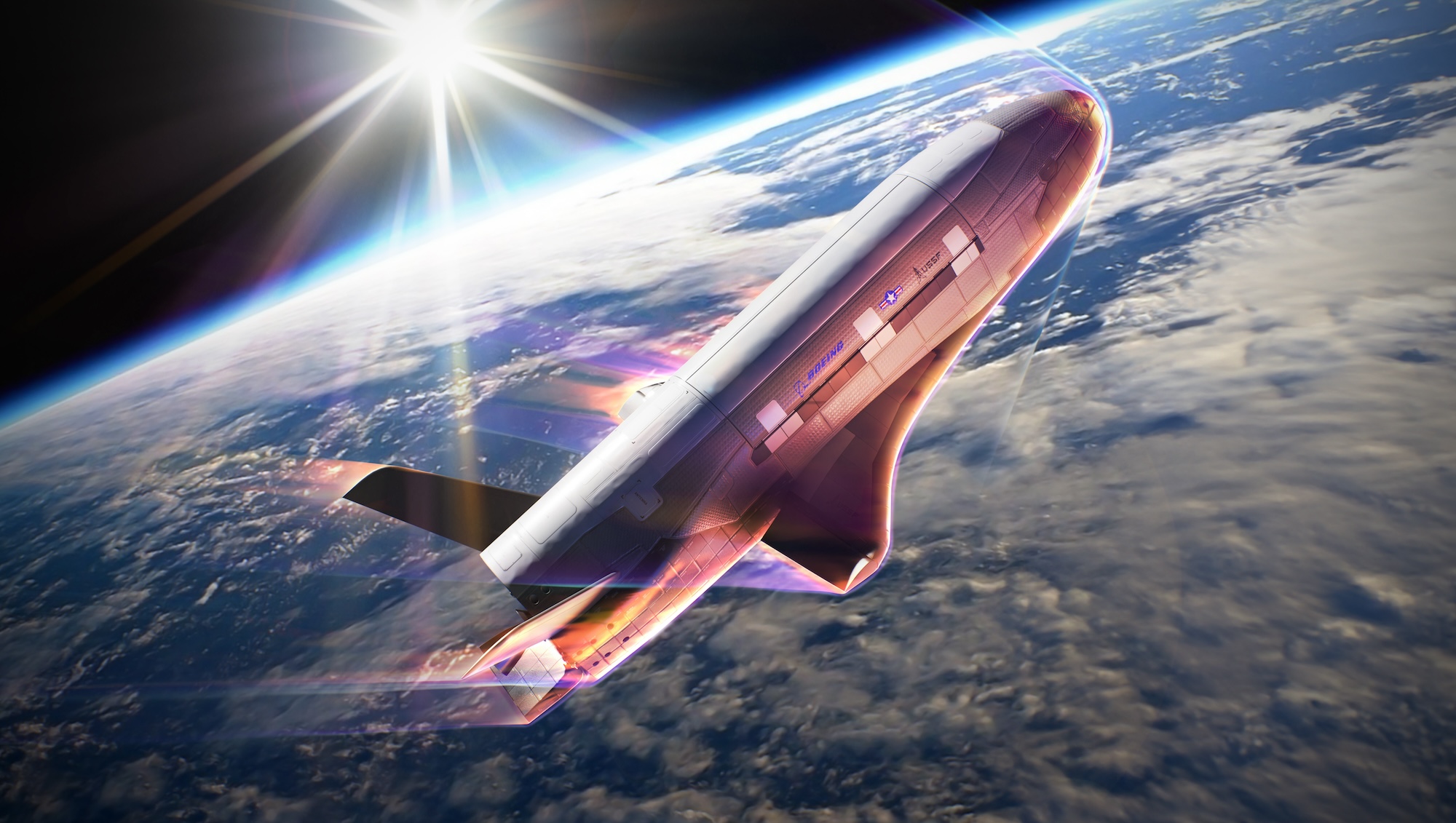One of the US Space Force’s (sort of) secret space planes known as the X-37B is gearing up to shift its orbit in a big way. According to an official October 10 announcement from the USSF, the Boeing-built experimental aircraft has begun performing a series of maneuvers known as “aerobraking” that will see it change its altitude by conducting “a series of passes using the drag of Earth’s atmosphere.” The process also allows the X-37B to adjust its trajectory while consuming a minimal amount of fuel. In doing so, the space plane will also “safely dispose of its service module components in accordance with recognized standards for space debris mitigation.”
This marks the seventh known mission for the reusable experimental vehicle after returning to orbit last December. As The War Zone explained on Thursday, it isn’t clear if the X-37B has already lowered its orbit in preparation for aerobraking—regardless, it will need to be at a relatively low altitude to take advantage of any atmospheric drag. While aerobraking isn’t new, the current mission allegedly marks its first-ever use for the space plane. Once the process is complete, the USSF says its X-37B will “resume its test and experimentation objectives until they are accomplished” before deorbiting and returning to Earth. The USSF added its highly classified craft has so far conducted radiation effect experiments as well as test “Space Domain Awareness technologies in a Highly Elliptical Orbit” during its seventh mission.
But if you’re hoping for much more detail than that, you’re out of luck. While experts previously noted its advanced maneuverability, observers still have questions about the space plane’s main payload bay that is roughly the same area as a truck bed, as well as its service module adapter capable of carrying even more equipment into orbit. The USSF’s unit responsible for both X-37B’s, Space Delta 9, is light on information when it comes to what the reusable craft will do once officially deployed. A press release earlier this year described Space Delta 9 as “the focal point for preparing, presenting and projecting assigned and attached forces for the purpose of conducting protect and defend operations and providing national decision authorities with response options to deter orbital threats.” That’s a lot of words that, upon closer inspection, say very little.
[Related: China’s super-secret space plane spotted above Europe.]
One future operation for the X-37B, however, may be intercepting and neutralizing Russian nuclear-equipped anti-satellite weapons—far more proactive measures than have been publicly acknowledged so far regarding space warfare. That probably shouldn’t come as too much of a surprise though, considering the first-ever commissioned USSF artwork depicted a very familiar looking space plane combatting enemy satellites. It’s unclear if an X-37B will ever go head-to-head with an orbital adversary, but if it does, testing procedures like aerobraking are crucial to ensuring it’s up to the task.

